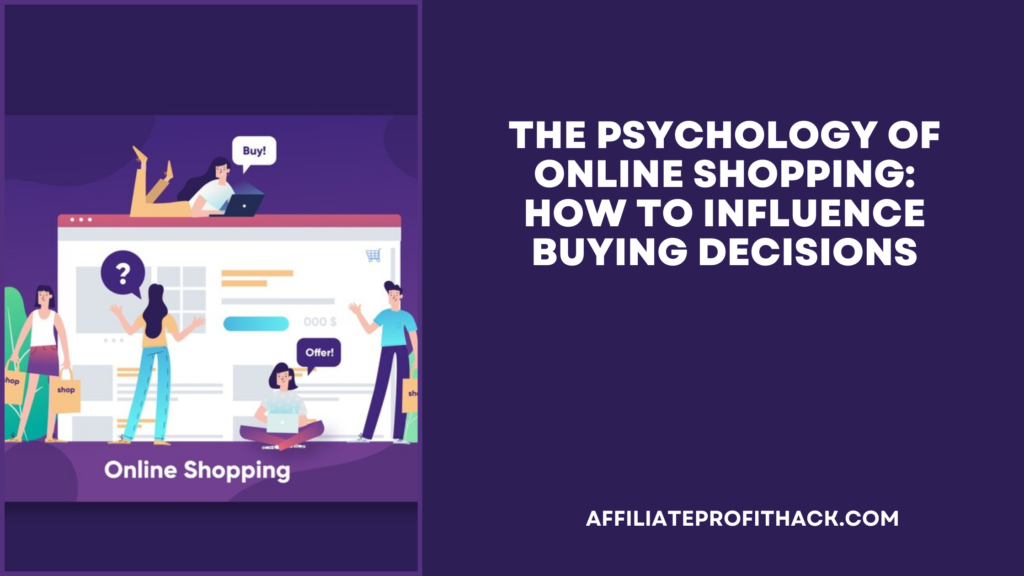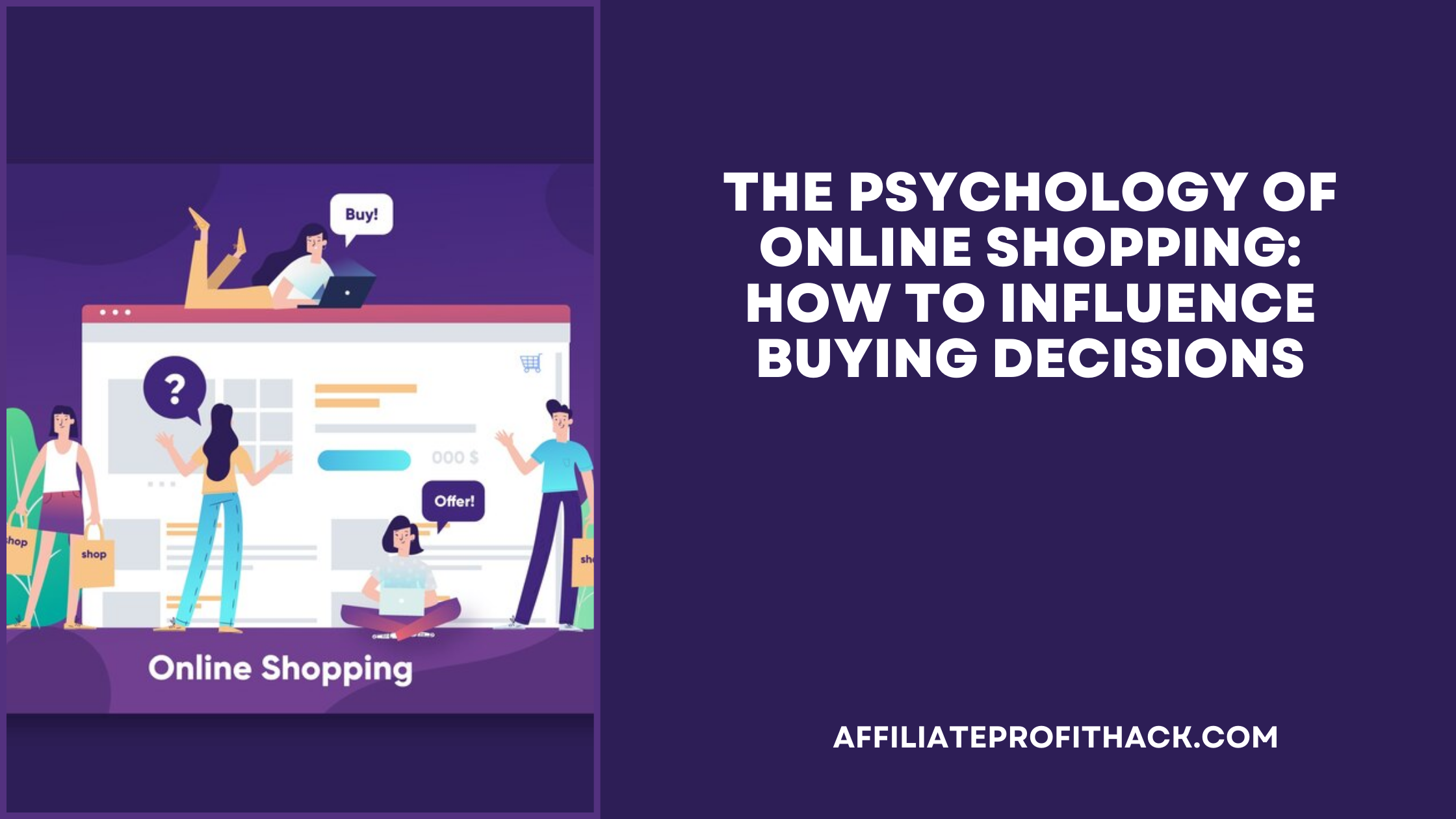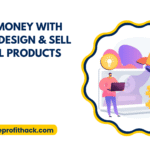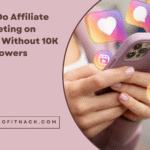Welcome to my article “The Psychology of Online Shopping: How to Influence Buying Decisions”.
Ever found yourself scrolling through an online store, adding items to your cart that you definitely don’t need, only to justify it with the classic, “Well, it’s on sale”? You’re not alone. The world of online shopping is a finely tuned machine, powered by subtle psychological tactics that nudge you toward making impulsive (and sometimes questionable) purchases. It’s not just about having a sleek website or offering free shipping—it’s about tapping into human behavior to influence decision-making.
In this blog, we will dive deep into the fascinating world of online shopping psychology. From the power of social validation to the impact of color psychology and persuasive copywriting, you’ll learn how ecommerce businesses influence buying decisions—and how you can apply these strategies to boost your own online store’s sales. Let’s unravel the mind games behind every “Buy Now” button.
My Best Recommended & Proven Way to Make $100-$300 Daily – Watch This FREE Video to START >>>

Understanding the Psychology Behind Online Shopping
Online shopping isn’t just about convenience—it’s a masterclass in human psychology. The moment you land on an ecommerce site, you’re subtly guided through a series of emotional and cognitive triggers designed to influence your decisions. You might think you’re in control, but in reality, your brain is being nudged, poked, and occasionally sweet-talked into hitting that “Checkout” button.
One of the biggest drivers behind online purchases is emotional gratification. Unlike in-store shopping, where you can physically touch and evaluate products, online shopping relies heavily on imagination and anticipation. Retailers know this, which is why they use vivid product images, persuasive descriptions, and lifestyle shots to help you picture yourself with the product. That sleek coffee maker isn’t just an appliance—it’s the key to a chic, Instagram-worthy morning routine.
Then, there’s the undeniable thrill of instant gratification. Sure, you have to wait for shipping, but the dopamine hit happens the moment you place the order. The “Thank You for Your Purchase” page? That’s not just a confirmation—it’s a digital high-five to your brain. And if the site offers one-click purchasing or auto-filled payment details, it reduces the friction, making it even easier to spend money impulsively.
Finally, let’s not forget the power of personalization. Those “You may also like” recommendations? They’re not random. They’re carefully curated based on your browsing history and purchasing patterns. By making the experience feel tailored to you, ecommerce sites trigger a sense of familiarity and trust, making you far more likely to convert.
In short, online shopping is less about convenience and more about clever persuasion. The next time you find yourself justifying a spontaneous purchase, just remember—it’s not you, it’s your brain being played like a well-tuned fiddle.
The Power of Social Proof and Reviews
Ever bought something online just because it had thousands of glowing reviews? That’s social proof doing its job. In the ecommerce world, social proof is like the digital version of a friend saying, “You HAVE to try this!” It taps into a psychological principle where people assume that if others are raving about a product, it must be worth buying. And let’s be honest—who hasn’t been swayed by a suspiciously enthusiastic five-star review or a testimonial with way too many exclamation points?
The magic of social proof lies in its ability to create trust and reduce hesitation. When you see that 4,583 people have given a product five stars, your brain interprets it as a stamp of approval. Even if you’ve never heard of the brand, suddenly it feels reliable. This is why ecommerce sites prominently display star ratings, customer reviews, and testimonials—they’re not just for show; they’re strategic trust-builders.
My Best Recommended & Proven Way to Make $100-$300 Daily – Watch This FREE Video to START >>>
Then, there’s the infamous FOMO effect. Ever seen phrases like “Only 3 left in stock!” or “200 people are viewing this product right now”? That’s social proof mixed with a dash of urgency. It creates the fear of missing out, making you feel like if you don’t buy it immediately, you’ll lose your chance forever. And when you see real-time purchase notifications (“Sarah from Texas just bought this!”), it adds a sense of popularity and credibility, making you more likely to follow suit.
User-generated content (UGC) also plays a huge role. Seeing real people using or endorsing a product—through photos, video testimonials, or social media shoutouts—makes it feel authentic and relatable. In fact, products with UGC often see significantly higher conversion rates because they offer real-world validation.
In the end, social proof isn’t just about showing off positive reviews—it’s about triggering trust, reducing doubt, and creating urgency. So, the next time you find yourself buying that random gadget just because it has “over 10,000 satisfied customers,” know that you’ve just been subtly (and effectively) influenced.
The Impact of Website Design and UX on Buying Behavior
You could have the best products in the world, but if your website looks like it was built in 2009, customers will click away faster than you can say “loading error.” When it comes to ecommerce, website design and user experience (UX) play a massive role in influencing buying behavior. The way your site looks, feels, and functions determines whether visitors stick around long enough to make a purchase—or bounce without a second thought.
First, let’s talk about visual appeal. Humans are hardwired to make snap judgments based on appearance. If your site is clunky, outdated, or poorly designed, it creates a sense of distrust. On the flip side, a clean, visually appealing layout with consistent colors, high-quality images, and readable fonts signals professionalism and credibility. Even the color scheme matters—red and orange create urgency (think flash sales), while blue evokes trust and calm (perfect for financial services or tech products).
Then, there’s site speed and navigation. If your website takes longer to load than it does to brew a cup of coffee, you’re losing customers. Studies show that a one-second delay in load time can reduce conversions by up to 7%. And once visitors are on your site, the navigation needs to be intuitive. No one wants to hunt through ten sub-menus to find the checkout button. Clear categories, streamlined filters, and a frictionless checkout process keep users from getting frustrated and abandoning their carts.
Finally, let’s not forget the power of calls-to-action (CTAs). A bland “Submit” button won’t cut it. Strong, action-oriented CTAs like “Get Yours Now” or “Claim Your Discount” create a sense of urgency and push shoppers toward making a decision. Combine this with trust signals—badges for secure payments, free shipping icons, and money-back guarantees—and you’re building confidence with every click.
In short, your website design is more than just aesthetics—it’s a silent salesperson. A sleek, fast, and user-friendly site creates a smooth shopping experience that makes it easy (and tempting) for customers to spend.
Pricing Strategies That Influence Buying Decisions
Let’s be honest—no matter how much we try to convince ourselves that we’re rational shoppers, pricing strategies mess with our brains more than we’d like to admit. The truth is, most ecommerce stores aren’t just setting random price tags—they’re using psychological tactics to make you feel like you’re getting a deal (even when you might not be). And it works like a charm.
First up: charm pricing. Ever wondered why most products are priced at $9.99 instead of $10? It’s not because businesses are being cute—it’s because your brain perceives $9.99 as closer to $9 than $10. This is called left-digit bias. Even though the difference is just one cent, it feels significantly cheaper. And when you see a product listed as “$199” instead of $200, it suddenly seems like a bargain, even though it’s basically the same price.
My Best Recommended & Proven Way to Make $100-$300 Daily – Watch This FREE Video to START >>>
Next, we have anchoring, the art of making a price look better by showing a more expensive option first. Imagine you’re browsing for headphones. The first pair you see is $299. Ouch. But then you scroll down and find a similar pair for $149. Suddenly, that $149 feels like a steal—because your brain is still anchored to the higher price. Ecommerce sites frequently use this strategy by displaying “original” prices crossed out next to “discounted” ones, creating the illusion of a massive deal.
And then there’s scarcity and urgency pricing. When you see phrases like “Limited-Time Offer” or “Price Goes Up Soon,” it triggers loss aversion—the fear of missing out on a good deal. The mere thought of paying more later makes you more likely to buy now, even if you weren’t planning to. Add a countdown timer, and you’re practically racing to checkout.
Finally, let’s not forget the good old free shipping trick. Retailers know you’re more likely to spend more to avoid shipping fees. So, they set a “Free shipping on orders over $50” threshold, encouraging you to add just one more item to qualify. You end up spending $60 to save $5 on shipping, but hey—it feels like a win.
In the world of ecommerce, pricing is more than just numbers—it’s perception, persuasion, and psychology. And whether you realize it or not, every “deal” you snap up is probably part of a carefully crafted pricing strategy.
Emotional Triggers and Persuasive Copywriting Techniques
If you think you are buying products online based on logic, think again. Emotional triggers are quietly pulling the strings behind most of your purchasing decisions. In fact, people buy based on emotion and justify with logic—and savvy ecommerce brands know exactly how to exploit that. Through persuasive copywriting, they tap into your fears, desires, and aspirations, making you feel like their product is the only solution to your problem.
First, there’s the pain-and-solution technique. This strategy is all about agitating a pain point and swooping in with the perfect fix. For example, a skincare product description might start with, “Tired of dealing with stubborn acne that just won’t budge?” Boom—immediate relatability. Then comes the solution: “Our dermatologist-approved formula clears breakouts in just 7 days—guaranteed.” By directly addressing a frustration, the copy makes the product feel like a must-have remedy rather than just a nice-to-have.
Next up: FOMO-driven language. Ever seen phrases like “Don’t miss out!” or “Last chance to save”? That’s fear of missing out in action. This technique creates a sense of urgency and scarcity, making you feel like if you don’t act now, you’ll regret it later. And when you read lines like “Only 2 left in stock!” or “Offer expires tonight,” your brain practically begs you to hit “Buy Now” before it’s too late.
Then, there’s aspirational copy, which sells a lifestyle rather than a product. Instead of saying, “Buy this travel bag,” a well-crafted description says, “Effortless style meets functionality—travel the world with confidence.” See the difference? The latter isn’t just selling a bag—it’s selling the dream of being stylish, confident, and adventurous, making it far more appealing.
Finally, power words do a lot of heavy lifting. These are emotionally charged words that create vivid imagery and stir feelings. Words like “effortless,” “guaranteed,” “exclusive,” “proven,” and “transform” trigger excitement and trust. Sprinkle them strategically into your product descriptions and CTAs, and you’ll watch conversions climb.
At its core, persuasive copywriting is all about making customers feel something—whether it’s relief, excitement, or FOMO. Because when emotions are involved, buying decisions become almost automatic. So, the next time you find yourself clicking “Add to Cart” without thinking twice, just know—you’ve been successfully (and masterfully) persuaded.
Conclusion
Online shopping may seem like a simple exchange of money for goods, but behind every “Buy Now” button is a carefully orchestrated psychological strategy designed to influence your decisions. From the subtle trust signals of social proof to the urgency-inducing power of scarcity pricing, ecommerce brands know exactly how to push the right emotional buttons to turn browsers into buyers.
What makes these tactics so effective is that they tap into human nature. We trust products that others recommend, we feel compelled to snatch up deals that might disappear, and we’re drawn to persuasive language that makes us feel like we need something, even when we don’t. It’s not trickery—it’s clever marketing. And the brands that master it are the ones driving conversions and boosting their bottom line.
My Best Recommended & Proven Way to Make $100-$300 Daily – Watch This FREE Video to START >>>
So, the next time you find yourself justifying a spontaneous purchase or rushing to grab a “limited-time offer,” take a step back and recognize the psychology at play. And if you’re an ecommerce business owner, it’s time to start leveraging these same strategies—because understanding the science of online shopping is the key to turning casual visitors into loyal, repeat customers.
Thank you for reading my article “The Psychology of Online Shopping: How to Influence Buying Decisions” till the end. Hope it helped you. See you with another article.










